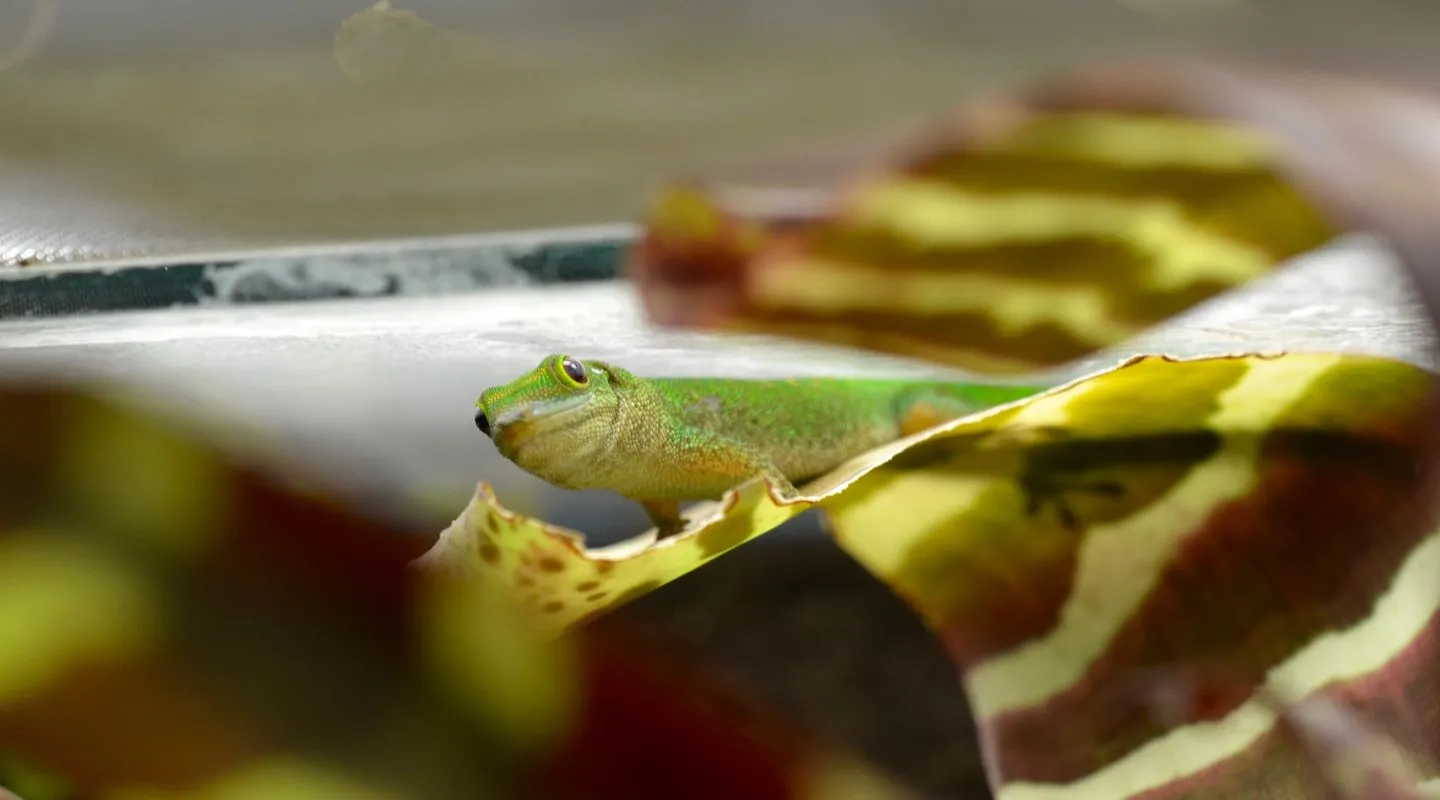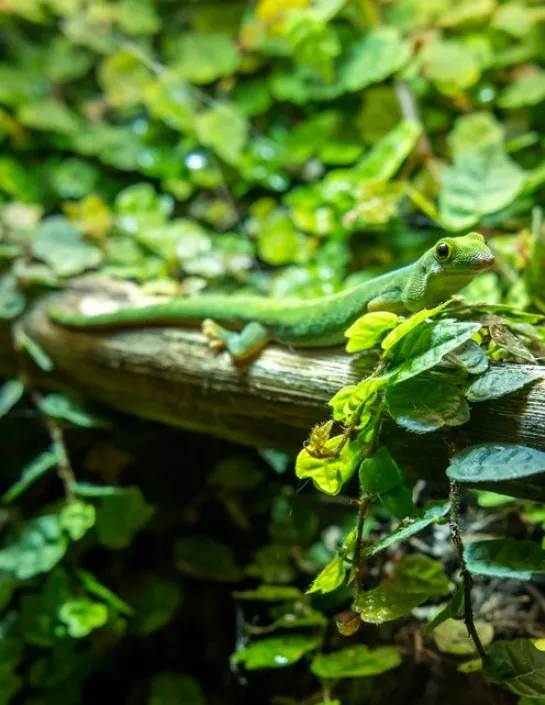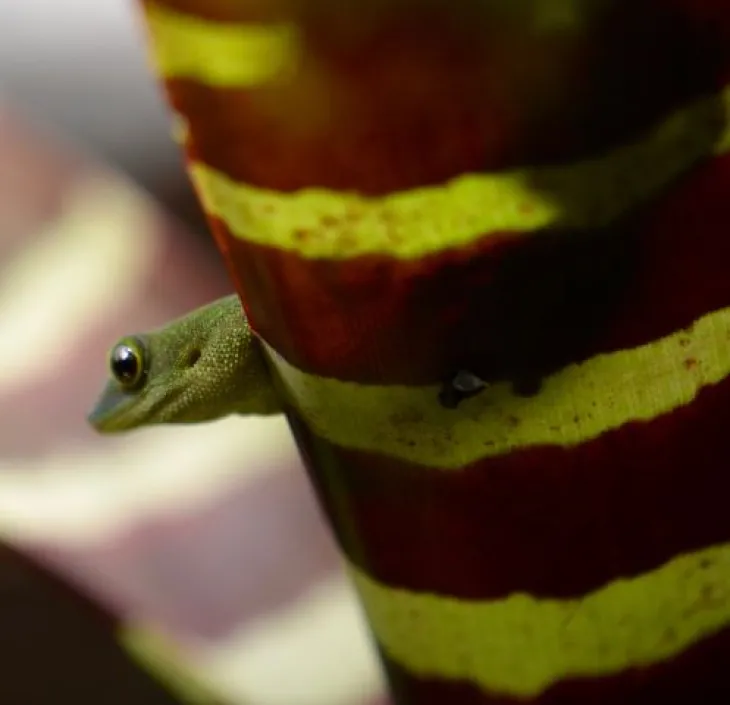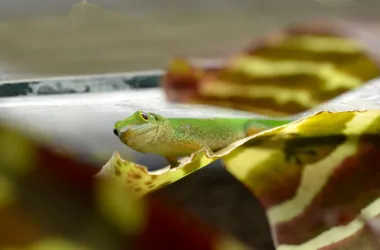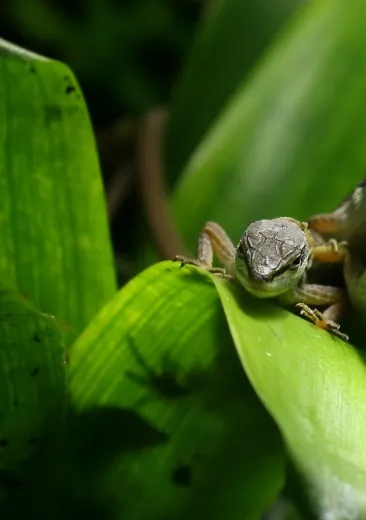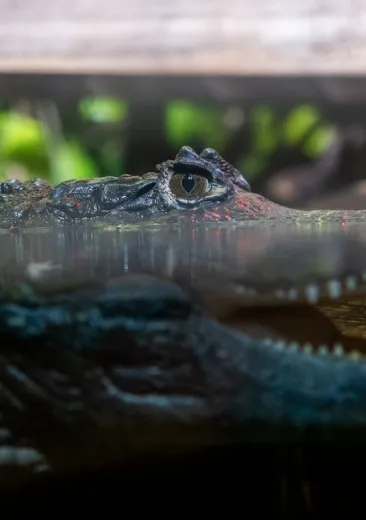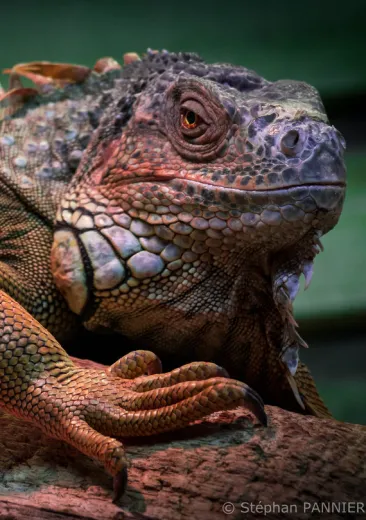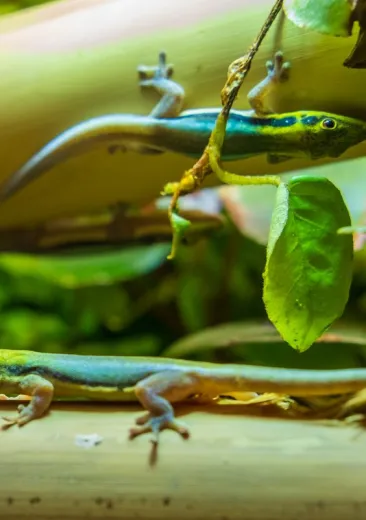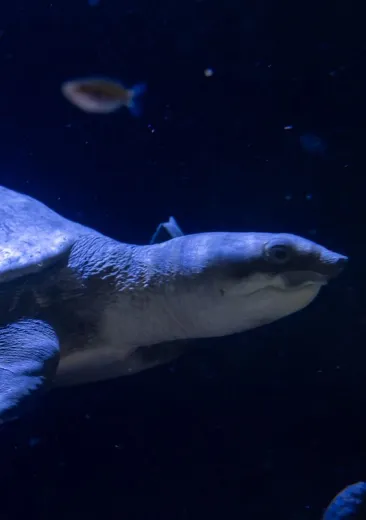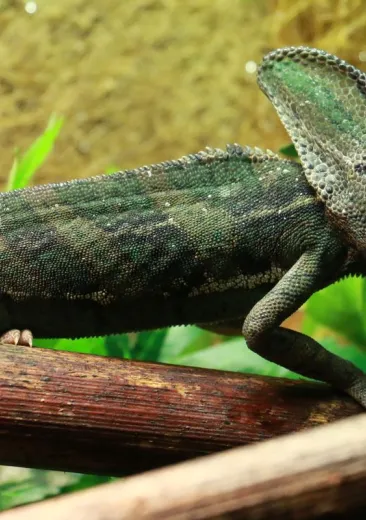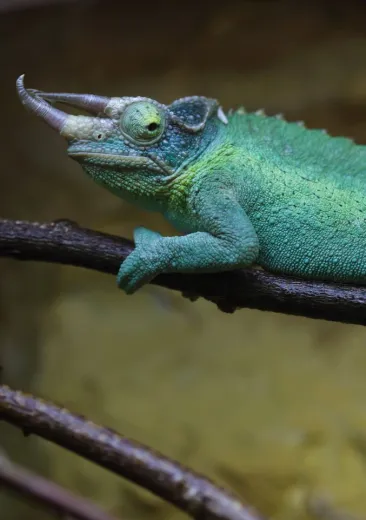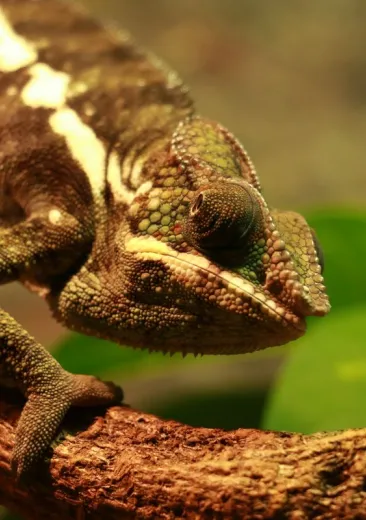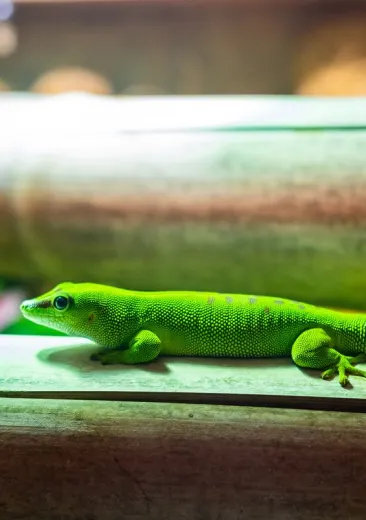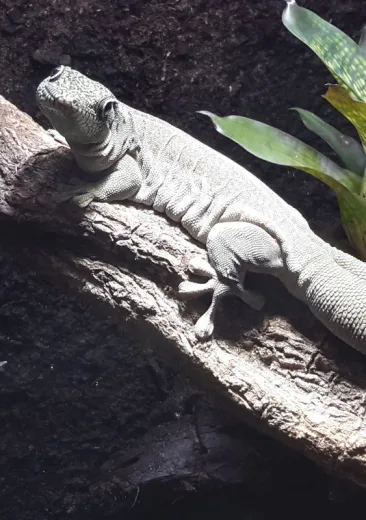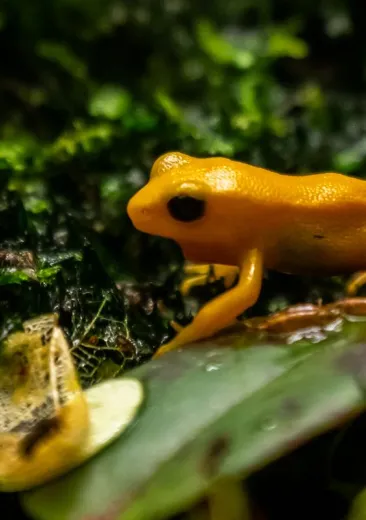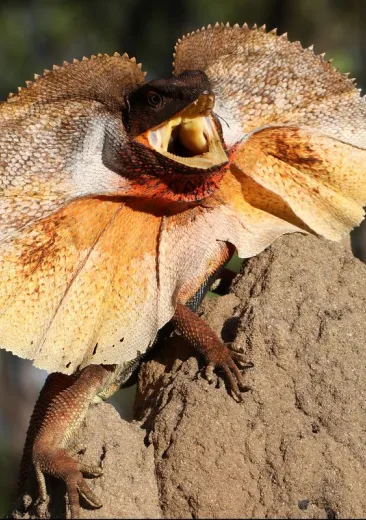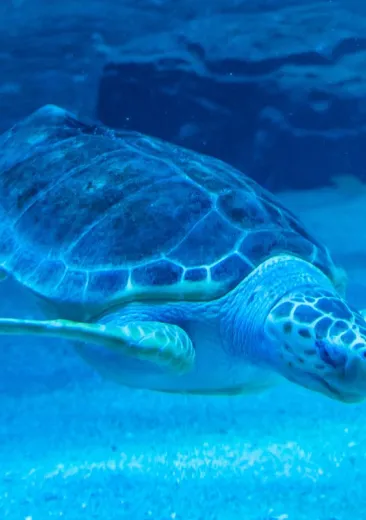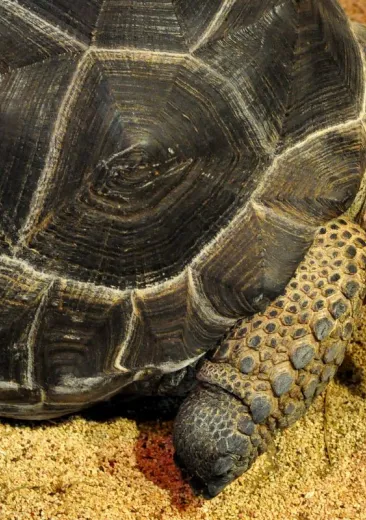Biomimicry: the adhesive strips on the underside of geckos' legs inspired the development of Gecskin, a material used to attach objects to walls.
Where is the animal to be found?
It lives only in the hot and humid forests of Mayotte. The territory where the Pasteur's day gecko lives in Mayotte stretches over 127 km2.
It is mainly found on bamboo, banana and palm trees.
How can it be recognised?
It measures between 10 and 30 cm. This species is oviparous. It is distinguished by its green colour and blue spots.
What is distinctive about it?
With day geckos in general, sexual dimorphism can be seen, i.e. morphological differences allow males to be recognised from females.
Threat and protective measure
Near-threatened species. Its trade is regulated in Europe.
